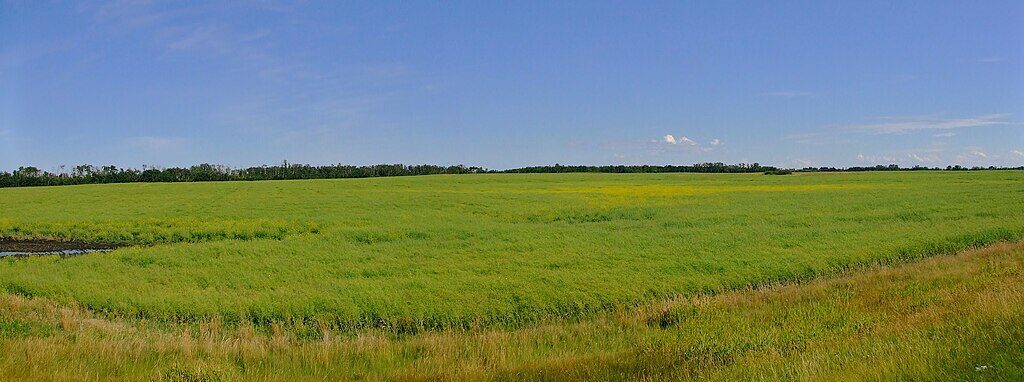Despite their immense value as carbon sinks, habitat and biodiversity hotspots, native grasslands are “among the most threatened ecosystems in North America.”[1] Alberta has a variety of policies and guidelines that encourage the avoidance of industrial activities on native grasslands and the minimization and mitigation of damage where avoidance has not occurred. But to what extent is this approach actually adopted by Alberta’s decision-makers?
Is regulatory discretion undermining policy objectives?
Unfortunately, Alberta lacks a comprehensive grasslands policy that directly assesses the current risks to native grasslands and sets strategies and goals to address the continuing loss of these landscapes. But, as mentioned, there are several policies and guidelines that address activities on native grasslands. The theme that emerges from Alberta’s policies and guidelines is that industrial activities should avoid being sited on native grasslands. If avoidance is not achieved, then efforts should be taken to minimize and mitigate damage to native grasslands.
Most considerations around native grassland conservation and protection arise in the context of land use planning and regulation of activities (such as oil and gas development). On public lands, the primary land use decision-maker is the Alberta Government as owner and manager of those lands. On private lands, decisions are primarily made by the landowner although provincial and municipal laws may impose restrictions on private land use. Land use, and its impacts on grasslands, are also subject to decisions around activity regulation which are made by various regulatory bodies such as the Alberta Energy Regulator or the Alberta Utilities Commission. These land use and activity regulation decisions are meant to be guided by Alberta’s native grassland policies and guidelines, but to what extent do decisions adopt and implement these policies and guidelines?
Other resources on Alberta Grasslands Policy
Alberta Grasslands Conservation Policy
What consideration do regulatory bodies give to native grasslands when making decisions?
The ELC looked at decision-making by its regulatory bodies to assess the extent to which native grasslands played a role in shaping decisions. In particular, we looked to see if applications were denied on the basis of native grasslands concerns or whether conditions were placed on statutory authorizations to specifically address concerns.
Our assessment, reported in ELC’s Don’t Fence Me In: Regulatory Considerations and Protection of Alberta’s Native Grasslands, found that native grasslands concerns have been frequently raised before Alberta’s regulatory tribunals.
For instance, concerns about native grasslands have often been raised in the context of Alberta Utilities Commission (AUC) hearings for renewable energy developments. Over time, the AUC has shown increasing willingness to modify proposed projects to ensure native grasslands are avoided, in some cases requiring proposed infrastructure to be re-sited off native grasslands and imposing conditions designed to monitor and protect native grasslands (often due to it being valuable wildlife habitat).
Likewise, the Alberta Energy Regulator (AER) has been faced with native grassland concerns in some of its hearings. The AER has demonstrated some inclination to impose conditions onto statutory authorizations with a view to protecting native grasslands. However, it does not seem inclined to deny applications due to impacts on native grasslands. It is important to note that the vast majority of AER statutory authorizations are issued via a routine process which is an essentially automated process which does not include hearings. Thus, written decisions following from a hearing are only a small subset of activity regulation decisions made by the AER. Routine applications on private lands seem to generally leave surface matter to negotiation between the landowner and operator. On public lands, the AER relies heavily on the Master Schedule of Standards and Conditions (MSSC)to identify conditions to be placed on public land dispositions associated with the activity. The MSSC is an Alberta government document that sets out standards and conditions for operations on public lands based upon activity type and location.

https://web.archive.org/web/20161025154147/
What needs to change?
Alberta’s native grasslands would benefit from a comprehensive grassland policy. Such a policy should address risks to native grassland conservation and protection, and set clear strategies to grassland ecosystems. It is also essential that a comprehensive grassland policy be applied throughout Alberta by regulatory decision-makers.
In addition to a comprehensive grasslands policy, thought should be given to the possibility of enacting threatened landscape legislation which enables ecosystem-based protection and management. Alternatively, renewed commitment to completion of regional planning and associated environmental management frameworks under the Alberta Land Stewardship Act could result in the establishment of biodiversity goals and thresholds to conserve and protect native grasslands.
For more, watch out for our new report: Grasslands Considered: Regulatory Consideration and Protection of Alberta’s Native Grasslands.
Sign up for the webinar happening March 13, 2025, 12 pm MST
[1] Etienne M.J. Soulodre, Amalesh Dhar, and M. Anne Naeth, “Plant community development trends on mixed grass prairie well sites 5 years after reclamation” (2022) 179 Ecol. Engineering 106635 at page 1.
THANKS FOR YOUR SUPPORT
Your support is vital for stronger environmental legislation. As Alberta’s leading environmental charity, the Environmental Law Centre has served our community for over 40 years, providing objective guidance on crucial legislative changes. Your contribution helps protect our environment for future generations.
Please support our work: Share, engage and donate to the ELC
